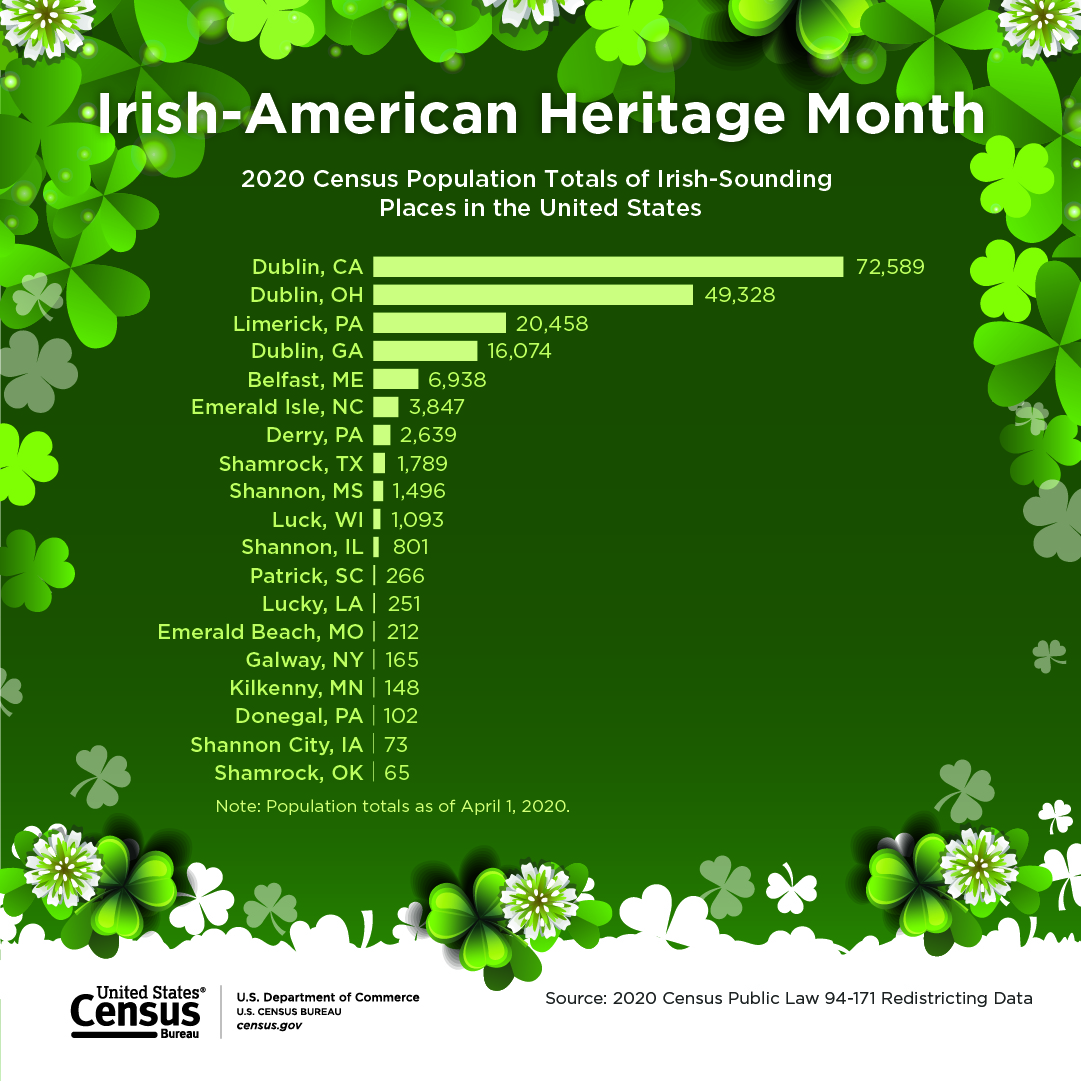Irish-American Heritage Month and St. Patrick’s Day: March 2022
Congress designated March as Irish-American Heritage Month in 1991 and the president issues a proclamation commemorating the occasion each year.
Originally a religious holiday to honor St. Patrick, who introduced Christianity to Ireland in the 5th century, St. Patrick’s Day has evolved into a celebration of all things Irish. The world’s first St. Patrick’s Day parade occurred on March 17, 1762, in New York City, featuring Irish soldiers who served in the English military. This parade became an annual event, with President Truman attending in 1948.
The following facts are made possible by the invaluable responses to U.S. Census Bureau surveys. We appreciate the public’s cooperation as we continuously measure America’s people, places and economy.
Did You Know?
The number/percentage of U.S. residents who claimed Irish ancestry in 2019.
Source:
Source:
438,350
The number of people living in Cook County, Ill., who claimed Irish ancestry in 2019, the largest of any county in the nation.
Source:
More Stats
For more information on the Irish-American population, see the selected population profile from the 2019 American Community Survey 1-year estimates. Statistics include:
- Sex and age.
- Marital status.
- Educational attainment.
- Veteran status.
- Employment status.
- Occupation.
- Commuting.
- Housing.
- Income
Related News Products
Past Facts for Features
Briefs
Graphics
Related Information
Observances in our Facts for Features series:
- National Black History Month (February)
- Women's History Month (March)
- Irish-American Heritage Month (March)
- Asian American and Pacific Islander Heritage Month (May)
- The Fourth of July
- Anniversary of Americans With Disabilities Act (July 26)
- National Hispanic Heritage Month (Sept. 15 – Oct. 15)
- Halloween (Oct. 31)
- National Native American Heritage Month (November)
- Veterans Day (Nov. 11)
- Holiday Season (November — December)
Editor’s note: These data come from a variety of sources and may be subject to sampling variability and other sources of error. We generally release Facts for Features about two months before observances to accommodate magazine production timelines. For more information, contact the Census Bureau’s Public Information Office at (301)763-3030 or <[email protected]>.
Profile America's Facts for Features provides statistics related to observances and holidays not covered by Stats for Stories. For observances not listed above, visit our Stats for Stories webpage.
Stats for Stories provides links to timely story ideas highlighting newsworthy Census Bureau statistics that relate to current events, observances, holidays and anniversaries. The story ideas are intended to assist the media in story mining and producing content for their audiences. Dates with presidential proclamations are marked with (P).






